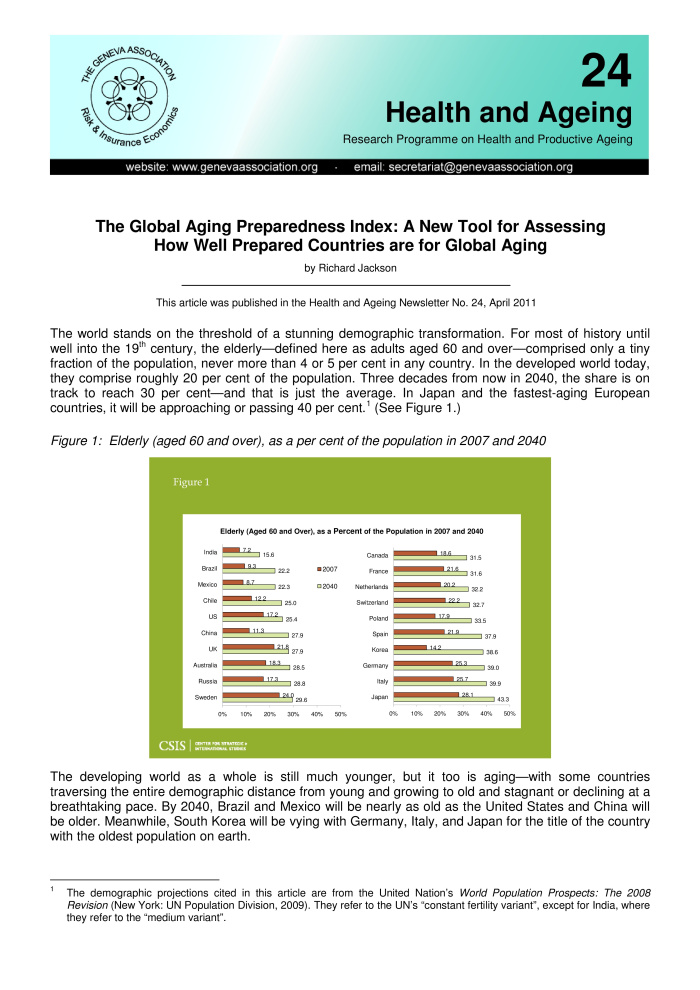The Global Aging Preparedness Index: A New Tool for Assessing How Well Prepared Countries are for Global Aging

The world stands on the threshold of a stunning demographic transformation. For most of history until well into the 19th century, the elderly - defined here as adults aged 60 and over - comprised only a tiny fraction of the population, never more than 4 or 5 per cent in any country. In the developed world today, they comprise roughly 20 per cent of the population. Three decades from now in 2040, the share is on track to reach 30 per cent - and that is just the average. In Japan and the fastest-aging European countries, it will be approaching or passing 40 per cent.
Which countries are most prepared to meet the challenge? And which countries are the least prepared? The Global Aging Preparedness Index (or GAP Index), developed by the Center for Strategic and International Studies, provides the first comprehensive quantitative assessment of the progress that countries worldwide are making in preparing for global aging, and particularly the old-age dependency dimension of the challenge.




